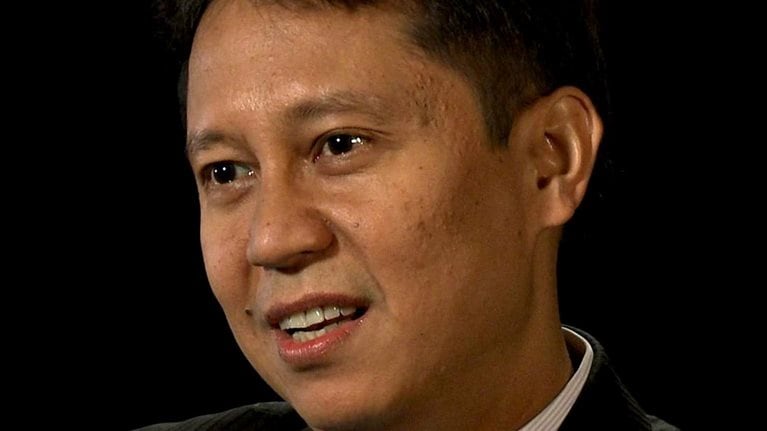The rush to meet bank customers’ growing digital needs has sparked debate about whether traditional branches should become a thing of the past. For Citigroup chief executive officer Michael L. Corbat, the answer is simple: no. That’s because even as some customers seek more digital-banking options, others continue to use branches for a variety of services. In this interview with McKinsey’s Rik Kirkland, Corbat explains how Citi is seeking to better understand its customers, meet their needs, and cope with an ever-changing regulatory environment. An extended and edited transcript of Corbat’s remarks follows.
Interview transcript
Pursuing organic growth
As opposed to growth through acquisition—which I don’t think will occur—we’re going to be primarily, if not exclusively, focused on organic growth. From a regulatory perspective, we see that if big financial institutions don’t have scale, they aren’t going to be allowed to buy it. That means if you don’t have scale, your alternative is to build it. And so that organic growth is going to come in a few ways.
One is that we’re very focused in terms of our client and customer segmentation, and we just have to get more out of our existing client base. If you look at the segmentation we’ve done in terms of the way we work in countries or in our products, there are areas around the world that we’ve labeled as “invest to grow.” And we’ve got a couple of handfuls of those. We’ve also got those we view as “staying the course”—reasonable, GDP-style growth. And we’ve got those where we actually don’t necessarily see the robust opportunity—where we should be, in essence, trimming resources. That is, supporting customers and clients, but not in an investment or growth mode, because when you try to force growth in those places, we’ve learned that it typically isn’t good growth.
We’re in the institutional-client business, and we’ve got a broad range of products there, ranging from advice through investment banking, corporate banking, private banking. We’ve got our markets business—our capital-markets business. And, of course, we have our transaction-service business. So, coming to work in 100 countries, people often say, “How do you decide where you want to be, and where are those places that you want to make investments?” And the answer, in many ways, is very straightforward. It’s where our customers and clients want to be. Where do the Nestlés, the Coca-Colas, the General Electrics see growth? It’s our objective to have the resources to meet that need, whether that’s a balance sheet, capital-markets access, advice, transaction services, or retail banking. Our objective is to be there on the ground, to have those products available to them, to make sure that we’ve got the resources in terms of capital-balance-sheet liquidity and to be able to show them what it is that they’re wanting and expecting.
Oftentimes, as an example, companies approach cash management on a regional basis. Africa is an example. As the only Pan-African bank operating in all three or four subterritories, we’ve got the ability to offer a comprehensive solution—as opposed to having to use a French bank in the north and a British bank in the west, et cetera. We’ve got the ability to come together, and we’ve got the power of pricing that we can deliver on that front.
From a consumer perspective, it feels much more like a local business. But what’s going on behind the scenes is our ability to leverage global infrastructure. And if you look at our presences in many consumer countries, we’re not the biggest bank, but we have the ability to create scale out of the common approach, the common systems that we’re doing in the middle and back offices. It radically changes and improves our customer service, our call centers, our speed to purpose, our investments, and the focus of our investments. So on the front end, it feels a bit more local. But what’s going on behind the scenes is that it actually comes together nicely.
Engaging the digital customer
In order to be a bank and to be successful, digital has to be an integral part of that strategy. And you can’t think of it along separate channels. What we see today from the consumer parts of our business is that the way we’re interacting with and attracting customers toward our products has changed. The ways our customers are choosing to observe and to be part of their financial lives have changed. An example I use is the serial balance checker who used to call our call center five times a day to hear their balance. That person can now simply go online or check the mobile app wherever they are. This way, we allow people to be the architects of the information they’d like to receive and when they’d like to receive it.
So there’s a transition happening. Oftentimes, we speak about the branch being the physical vehicle of delivery, of really taking a customer from physical to digital. But if you travel around the world and look at our branches, our branch constructs are radically changing. We’re piloting smart branches: building new branches that are, in many cases, just 700 square feet, no counters, a couple of automated cash machines, lending machines. I fully expect over time that we’re going to continue to see, as an industry, a reduction in terms of physical-branch footprint. If you look at branch traffic and the things today that we can do online, there’s not that necessity to go into a branch like there was historically.
Digital is, in many ways, revolutionizing many of the things we do, from finance to parts of operations to the way client onboarding happens. A great example is the transformation that we’re taking our consumer business through. If you go back and you look at Citi historically, it’s very product-centric: Citi mortgage, Citi auto, Citi this, Citi that. And now it’s much more client-centric. Digital has been very powerful in terms of our ability to look at our customers holistically, of having that information and being able to pull that information together so that we can see the entire financial lives of our customers. We can service them better, we can help them make better decisions, and we can be much more focused in terms of the products that we’re offering. That resonates with them.
And we’re moving away from the so-called big project, big thing. A lot of digital today is about experimentation in terms of what works. It’s really trying to turn that lens and say, “What are the things that we can be doing? Where are the pain points?” And in a digital age, we learned that in our own applications online, we had certain things we were asking for that weren’t necessary, that were causing customers to just stop filling out the application. So now, just measuring clicks, we can see where we’re losing their attention or where people become uncomfortable giving us information. We really went back and tore things apart by looking at what was really essential and putting ourselves in the customer’s perspective.
Retaining talent
I’m going on 32 years at our company today. For the average employee in the financial-services industry, it’s four or five years between jobs. What we have to do is not only bring in the right talent but also keep the talent. And from Citi’s perspective, what we’ve got the ability to do is to offer multiple careers within the same firm.
We pay attention to whether the employee has a geographical preference or a product preference or whatever those things are. And that’s caused us to really engage in a very different way with our employees, asking them to really take ownership and be vocal about their careers. Our commitment back to them is if they get it halfway, we’ll meet you more than halfway in terms of being engaged. The response around that so far—it’s still early—has been positive.
Leading in a regulated age
One of the big challenges is that regulation has been evolving. And, like anything in life, it’d be great if somebody came in and said, “Here are the rules. Go to work.” What we’ve seen is the evolution of regulation, capital, increasing capital, liquidity, stress testing, resolution. The good news is I think we’re getting toward the latter stages of definition and implementation. So I’d hope in the next couple of years we get those largely finalized.
I probably spend somewhere in the order of 25 to 30 percent of my time on regulation and on historical issues. I’ve been very conscious of making sure that even though the institution needs to spend a lot of time on regulation, only the people who absolutely need to spend time on it do so. Our other people have the ability, then, really to be focused on customers and clients.
We have two significant work streams under way. One is our work around what we’ve termed as execution 2.0, which is a combination or series of six work streams. Every member of my management team, of my direct reports, is an owner of one of those work streams. It’s incorporated in my scorecard and cascaded down through the institution. Citi takes a similar approach to the way we approach ethics, ranging from making sure our employees feel comfortable escalating issues to their supervisors to reducing the number of issues that we’re creating to finding faster fixes to things as we identify them.


